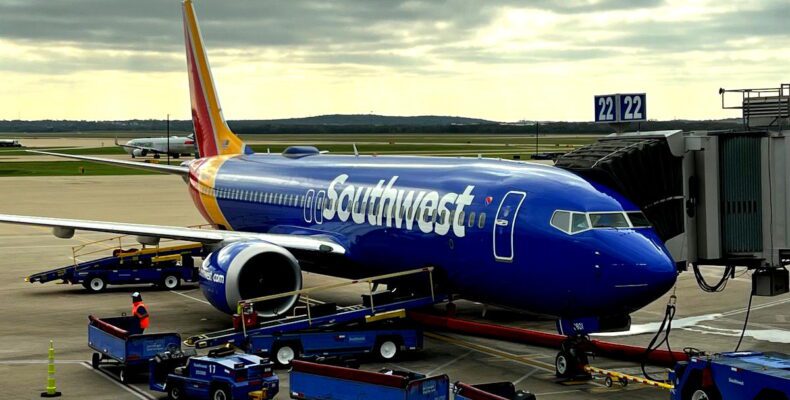Heroic Air Traffic Controller Avoids Disaster
Let’s not beat around the bush—being an air traffic controller is the occupational equivalent of walking a tightrope over a pit of yawning chaos. It’s stressful and fraught with the potential for catastrophe. Yet most of these unsung heroes are consummate professionals, as exemplified by a recent incident with a Southwest 737 in Phoenix. Thanks to VASAviation, we have an in-depth look into this extraordinary feat of composure.
Southwest 737 Pilot’s Error Brews Mid-Air Chaos in Phoenix
Phoenix Sky Harbor International Airport, February 24, 2025—the scene of a near disaster involving a Southwest Boeing 737 inbound from Los Angeles and an American Airbus A321 from Dallas. Both were closing in on the airport simultaneously, aiming for parallel runways as they prepared to make their descents into this bustling airport.
Here’s the crux: The American A321 had its runway approach sorted—straight and true. But the Southwest 737 had a curveball thrown its way; it was maneuvering from the south and had to swing left to land smoothly on its parallel path.
In walked our air traffic controller, calm and collected, saying, “I’ll have one more turn for you in just a second,” while adding a casual “traffic out there at one o’clock, the American A321 is rolling in at 5,000.” The Southwest crew acknowledged the situation. So far, so good, right?
Except then came radio silence. Cue the inevitable heartbeats of panic. The plane was now slicing through the air at a clip towards the American A321. Anyone in aviation knows that executing a parallel approach demands pilot precision in following these turn orders like clockwork. But what happens when the clock stops?
Our quick-witted controller received a jarring traffic alert. He sprang into action, advising the American A321 to veer right pronto and climb, effectively severing the direct path to calamity.
Meanwhile, our Southwest friends finally tuned back in—turns out, the radio frequencies got muddled. The pilot at the radios admitted he’d shifted frequencies too soon. A simple mistake, casting ripples of confusion across the flight deck. One wonders what was ticking inside those cockpit minds as they chased a jet they could see but weren’t hearing guidance for.
Thankfully, normalcy returned. The Southwest pilot owned up to the mix-up, realigned in the airspace’s grand dance, and brought the jets down safely.
This Air Traffic Controller: A Rockstar Among Us
If you thought bouncing around crisis demands and quick-thinking grew mundane beyond superhero comics, think again. This air controller from Phoenix deserves a stage and a spotlight. If you haven’t hit play on the Val Seny ski resort video yet, do consider treating yourself.
In the annals of high-pressure jobs, air traffic controllers are gladiators. They drum out instructions with such urgency and control, it’s a masterclass in pressure management. Hats off to this chap, truly professional and ever the calm captain steering the ship out of stormy skies.
No yelling, no chest-thumping bravado, just pure and unadulterated resolve to keep the air clear and pilots’ paths true. As for our now infamous radio frequency hiccup? Everyone’s been there—it’s the analog equivalent of sending your email draft to the wrong recipient—hardly fortunate but eminently relatable.
All’s well that ends well, ladies and gents, though one must wonder if the Southwest crew onboard enjoyed an extra drink on the house that evening…
Bottom Line
Inuitively enough, two titans of aviation, a Southwest Boeing 737, and an American Airbus A321 almost found themselves jostling for sky at Phoenix Airport. Both lined up for parallel runway action, yet the radio frequency slip-up threw a cloud of forgetfulness over the Southwest cockpit when it was time to turn.
Let’s toast to the air traffic controller’s hawkeyed readiness and the American pilots’ inch-perfect execution, both stepping up to defuse what could’ve been a mid-air game of bumper cars.
What’s your take on this Phoenix Sky Harbor incident?
